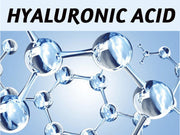What Is Hyaluronic Acid and Why Everyone Talks About It
Hyaluronic acid is one of the most beloved skincare ingredients for a reason. It can hold up to 1,000 times its weight in water, keeping the skin plump, hydrated, and glowing. However, despite its popularity, many people use it incorrectly, which can actually cause dryness instead of hydration. This guide explains how to use hyaluronic acid the right way for maximum results.
How Hyaluronic Acid Works
Hyaluronic acid (HA) is a humectant - a substance that attracts water to the skin. When applied to a slightly damp face, it binds moisture from the environment and from deeper skin layers, giving an instant smooth, dewy finish. But if the air is too dry, HA can pull water out of your skin instead. That’s why proper application and layering are crucial.
Benefits of Hyaluronic Acid
- Provides instant and long-lasting hydration
- Improves elasticity and smooths fine lines
- Supports a healthy skin barrier
- Enhances glow and suppleness
- Suitable for all skin types, even sensitive
Why Hyaluronic Acid Sometimes Causes Dryness
Using HA without sealing it with a moisturizer can lead to the opposite effect - dehydration. When the air is dry, HA draws water from deeper layers of your skin, evaporating it into the air. The result: tightness and dullness. To prevent this, always lock in hydration with a moisturizer or facial oil right after applying your HA serum.
Step-by-Step Guide - How to Use Hyaluronic Acid Correctly
Step 1 - Start with a Damp Face
After cleansing, lightly mist your skin or pat in a few drops of water. This provides the hyaluronic acid something to bind to. Applying it on dry skin can make it pull moisture away instead of attracting it.
Step 2 - Apply a Few Drops of Serum
Use 2-3 drops of serum and gently press it into the skin. Avoid rubbing. HA works best when it forms a thin film that evenly covers the surface.
Step 3 - Seal It In
Follow with a moisturizer to lock in the water molecules that HA attracted. For dry or mature skin, use a rich cream; for oily or combination skin, a lightweight gel moisturizer works perfectly.
Step 4 - Protect During the Day
Always apply SPF in the morning. UV rays can degrade hyaluronic acid and reduce its moisturizing benefits over time.
Step 5 - Combine Wisely
HA pairs beautifully with niacinamide, ceramides, and peptides. Avoid combining it with high concentrations of acids or alcohol-based toners, as they can strip away hydration.
Different Types of Hyaluronic Acid
Not all HA is created equal. There are multiple molecular weights that penetrate different layers of the skin:
- High molecular weight (HMW): hydrates the surface and reduces roughness.
- Low molecular weight (LMW): penetrates deeper for long-term moisture retention.
- Cross-linked HA: provides long-lasting hydration and resilience, often used in advanced serums.
Common Mistakes to Avoid
- Applying hyaluronic acid on completely dry skin.
- Skipping moisturizer after serum.
- Using too much product - a few drops are enough.
- Applying HA in extremely dry environments without added humidity.
How to Build a Hydrating Routine
Combine HA with barrier-supporting ingredients to create lasting hydration. Start with a gentle cleanser, then apply your HA serum, followed by a moisturizer rich in ceramides or squalane. Use sunscreen during the day to protect your skin’s moisture balance.
Shop the Routine
Explore skin & body care for hydrating cleansers and creams. Find treatments with hyaluronic acid and barrier-repair ingredients. Try mini beauty essentials to test top-rated HA serums in travel sizes.
FAQ - Hyaluronic Acid in Skincare
Can I use hyaluronic acid every day?
Yes. It’s gentle enough for daily use - morning and evening - as long as you apply moisturizer afterward.
Can I mix hyaluronic acid with retinol or Vitamin C?
Absolutely. HA pairs well with both ingredients to minimize dryness and irritation from actives.
Should I apply it on wet or dry skin?
Always apply on slightly damp skin to help HA attract water effectively.
Why does my skin feel tight after using HA?
You might be skipping moisturizer or using HA in low-humidity environments. Always seal with a cream or oil.
What’s better - serum or cream with hyaluronic acid?
Serums deliver concentrated hydration, while creams help lock it in. Use both for the best results.




